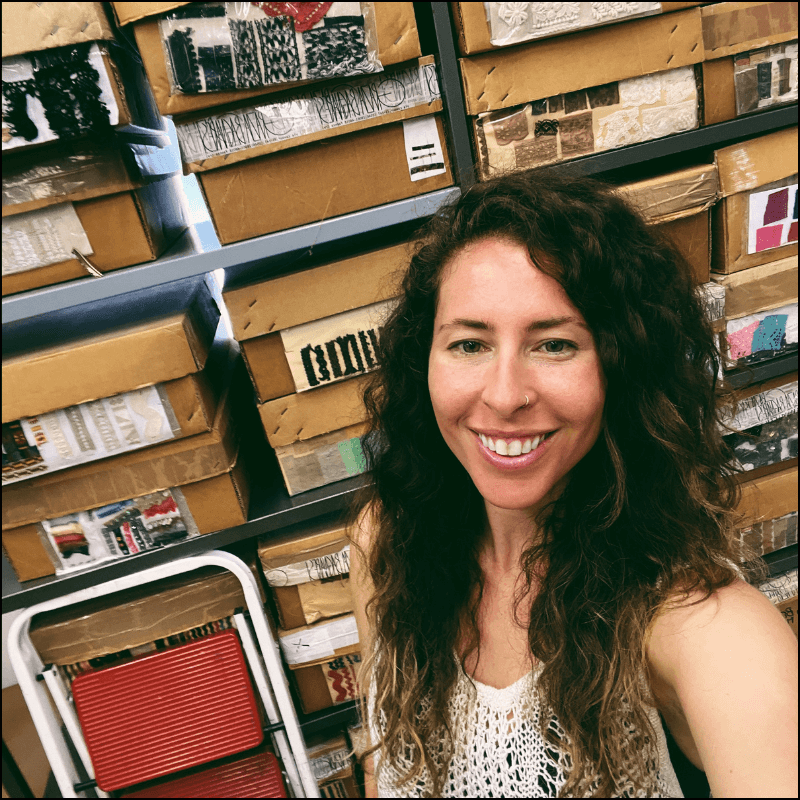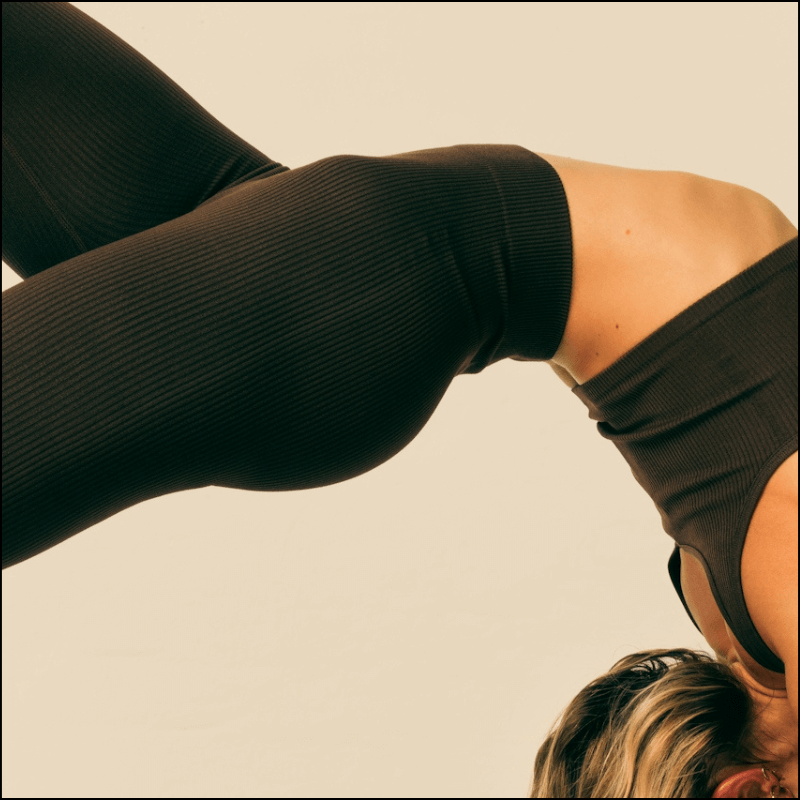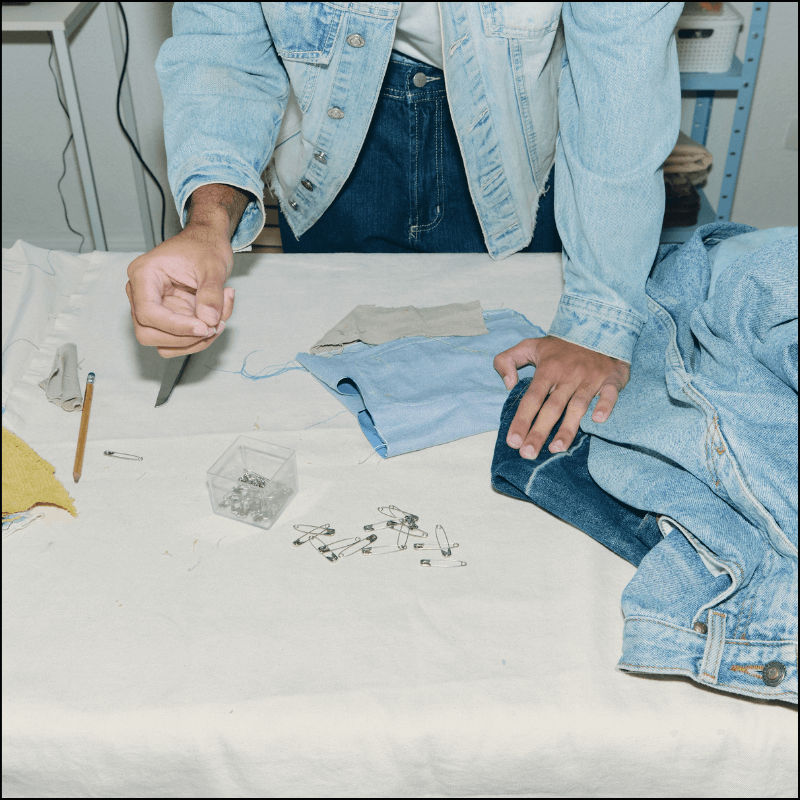HOW CLOTHES ARE MADE - A CLOTHING FACTORY TOUR
The first time the factory doors open, it kind of feels like you’re in an airport, except there are no signs directing you where to go and no gate numbers. Somehow, everyone else knows exactly where to go, and you’re the only one lost. When most people think of a factory, they think of sewing, but there is SO much more going on than just that. Today I will take you on a factory tour and explain exactly how clothes are made, from fabric to garment.
And here is the best part. Every factory by default, needs to do the same 7 steps. I am going to teach you how to spot if a factory does them well and makes a quality product, or is cutting corners.
BUT BEFORE WE GET STARTED...
Have you heard about the super secret document that everyone in the fashion industry uses, but no one is talking about? Probably not. That is because you can't find it on Google or Instagram (believe me, I've tried).
It's a form I have used for over 13 years at every job I have ever had. Literally everyone from brands to fabric suppliers use it, but you can't find it anywhere publicly.
The best part? It can cut your sourcing time in half, and save you tons of money in product development! This is the kind of info consultants charge the big bucks for. And, I'm giving it away for free until the end of the month.
So, get ready to make fashion startup life a whole lot easier, and GRAB YOUR FREE DOWNLOAD OF THE NOT-SO-SECRET SOURCING DOC HERE
Here’s what you’ll learn in this guide to how clothes are made…
- A quick story about my first time in a factory seeing how clothes are made
- Going with the flow
- Fabric and materials checking
- Cutting
- Sewing
- Quality assurance
- Pressing
- Packing
- Logistics
- Additional resources
My first time in a fast-fashion factory

Factories are exciting, not only because it’s where a design comes to life, but because of the energy. The first time I walked into a fast fashion factory in the Philippines will forever be one of my fashion core memories.
Lady Gaga was blasting. Fabrics, bins, and people were whizzing past me. And rows and rows of sewers (we're talking longer than a city block) sat sewing as fast as they could under a tin roof.
The energy was Mad Max meets night club meets office cubicles. Something you need to experience to truly understand - it’s an intensive process.
Now, your first visit to a factory might not be this massive (we were producing millions of units of clothing in this factory), but I promise you will feel the crazy raw energy of the people behind the clothing being made in whatever factory you end up in.
Anyway, let’s dive into the details of what is going on . . .
HOW CLOTHES ARE MADE, THE FASHION FACTORY WORKFLOW

The first thing you need to understand is that a manufacturing garment factory is a lot like a living and breathing organism. You can think of it like the human body with things constantly going in, coming out, and moving all around. There are a million little things happening that all work together toward the same goal – making clothing.
I have been in hundreds of factories, and they are all more or less set up the same way. But there is one key difference between smaller workshops and the big guys that are doing high-volume orders. And that is the entrance and exit.
Factories operate like a river, meaning they only flow one way. So much so that many factories even have arrows drawn on the floors and only allow workers (and visitors) to travel in one direction.
Big factories have the space to have a more linear flow with an entrance and exit on separate ends of the building. Fabrics and raw materials enter on one side, and garments leave on the other. Really big factories might even have two entrances (one for people and one for deliveries of fabric, trim, tags, etc).
But with a smaller factory (like the kind most startup fashion brands find themselves in), there is only one entrance/exit. Everything is coming and going through one door. So the flow is more of a circle than a straight line. And that is why things can feel even more hectic.
This is why newbies often think larger factories are more professional when that is not always the case. They just have more space and a different organizational system.
This article is mostly going to focus on how small factories operate.
STEP #1 - FABRIC AND RAW MATERIALS CHECKING

The first step in how clothes are made is an inspection. (Spoiler it's also one of the last steps too).
Before a factory can start cutting and sewing your fabric, they need to do a fabric check. Many new fashion brands forget this step because, honestly, they don’t even know they need it. But it’s crucial. Here’s why.
Let’s pretend you get your finished garment in the mail and there are stains on the fabric. You will most likely call your factory in a panic, demanding to know what happened (and asking for some money back for the damages).
Nine times out of 10, the factory will say, “We got the fabric that way. Go talk to your fabric supplier.”
So you’ll call your fabric supplier and say, “Hey, what the heck happened?”
And, you know what they’re going to tell you? “We shipped perfect textiles. The garment factory did the damage.”
And round and round you’ll go. Never getting a straight answer and never getting compensated for the damaged products.
So, to avoid all of this, fabric inspection is the first step that will create accountability. As soon as the fabric enters the factory, it is checked. And if there are damages, the fabric supplier is alerted immediately, so the fabric can be returned or fixed before it is cut and sewn.
STEP #2 - CUTTING

Once the fabric passes inspection, it moves onto the cutting area.
BTW, most sustainable fashion startup newbies find this step in how clothes are made the most interesting.
First, the factory unrolls the fabric and stacks it in layers on a long table, usually about the length of a tennis court. They then place the paper patterns (fyi, pattern making is done during the development process) on top of the stacks of fabrics. And, lastly, they trace the patterns onto the fabric with either chalk or a special pen that will disappear with water.
After all of that, it's time for cutting. But not with scissors. With a chainsaw. Yup – you read that correctly.
It’s pretty cool to watch. You can catch a glimpse of it in this video I created of the entire garment manufacturing process for my client, My Little Belleville.
STEP #3 - SEWING

Once all the pattern pieces are cut, they are sewn together. Now, just watching someone sew can be quite boring (even though it could be argued it is the most important step, becuase it's quite literally how clothes are made).
But, here is where it becomes interesting.
Each member of a sewing line is responsible for one part of the garment. Meaning, one person sews the body, another the sleeves, another the neckline, another might put on the labels and tags, etc.
As you walk down the line, you can literally watch the garment come alive from a stack of cut fabric pieces to wearable clothing. It’s basically the evolution of a garment in real-time.
STEP #4 - QUALITY CONTROL

My family works in real estate. And whenever my dad considers buying a property, he spends about 90% of his time inspecting the basement. While other buyers are inspecting the crown molding and deciding if they want carpet or hardwood floors, we are underground because that is where big expensive things tend to go wrong.
I take a similar approach when interviewing factories and deciding if I want to give them my client's apparel production orders. I generally spend the most time in the QA department. This is a real trick of the trade. Rookies will spend their time in the sewing room, but fashion experts know it’s all about quality assurance. IMO this is the most important step. It’s what will make or break your brand.
Here’s why…
Mistakes happen during garment production.
That is just part of the fashion process. If you think working with a good factory means everything comes out perfectly, well, that’s just not how it works in real life.
In real life, needles break and get stuck in the clothing seams. In real life, sometimes the color on the sleeve of a shirt doesn’t quite match with the body . . . or a size medium gets labeled a size large.
What’s important is catching and correcting these mistakes.
Because errors are inevitable, a good factory with a good quality assurance program might even produce extra garments to ensure quality in the fulfillment of your order.
Why?
This is actually one of my favorite secrets to share when teaching people about how clothing is made...
Factories know that while clothing manufacturing is imperfect, their clients expect perfection. So, they plan for about 5% in damages. Meaning five of the shirts will not be perfect and will be tossed even before they get to the customer. (FYI this is high level, and most people in the fashion industry don’t even know this).
So, say you order 100 shirts from a factory. A good factory with a good quality assurance program will probably make about 105 shirts.
Kind of wasteful, huh? This is the hypocrisy in sustainable and ethical fashion. Most small brands don’t even know this waste is happening. They spend so much time focusing on getting the “perfect” product, they never bother to ask how it's possible.
STEP #5 - PRESSING

Next up is pressing. This step will totally transform a garment. I like to think of it like a bad 90s rom-com makeover (like in She’s All That or The Princess Diaries) where all of a sudden the girl is gorgeous because she took off her glasses and straightened her hair. We can unpack that another day. Anyway . . .
When a garment is complete and comes off the sewing machine, it is crumply, frumpy, and looks like something you would find in a bargain bin in the basement of a department store.
The ironing and pressing are what bring it to life.
Pro tip - Not all fabric pressing is equal.
A lot of factories, in an effort to save time, will lay the garment flat and just iron over the top of it. This is terrible.
The right way to iron a garment is to open and press each seam individually. It takes probably five times longer, but when a customer tries on that garment for the first time, they will feel the difference in quality and fit.
STEP #6 - PACKING

After propper garment pressing, it's time for packing. First in a poly bag, then into a shipping carton. This step isn’t a ton of fun or very exciting.
When the packing is done, the brand will get something called a packing list. A packing list is what it sounds like – a list of each carton and what styles and sizes are in each box.
This is important because sometimes what you order is not what ships. For example, back to those 100 shirts. Maybe the factory was only able to create 99 perfect shirts. In that case, you only pay for the 99 shirts that get shipped.
It is important to always compare your initial PO (purchase order) to your shipping docs to make sure you are being charged for the correct quantities.
STEP #7 - LOGISTICS + EXIT

This photo was taken when I was working in the Philippines. While the workers wait to load the cartons onto the truck, they hang out and play games underneath in the shade. They even set up hammocks like this one sometimes!
Lastly, we have logistics at the exit.
This is where garment manufacturers stack up all the boxes with the clothing production order, and ships them out.
Now, here is something to know about shipping. The keyword you need to know is port city. Port cities are cities where goods enter and exit. If a factory is not located in a port city, your order will need to be shipped domestically to the port before it can be shipped internationally.
For example, Jaipur is not a port city. So any clothing manufactured in Jaipur must be shipped to Delhi first. Then it can ship internationally. If you want to learn more about manufacturing in Jaipur, check out this article.
This is important to know for two reasons.
The first is tracking. A factory might tell you your goods have shipped but not provide a tracking number. When this happens, brands often think the factory is lying. But what this usually means is that the goods first ship locally to the port city, where they’ll need to clear customs. Once they clear customs, only then will they get an international tracking number.
The second reason is timing. Having a two-step shipping process takes more time. So this is time that needs to be factored into your timeline.
ADDITIONAL RESOURCES

- How to find custom clothing manufacturers for startups
- Should I hire a manufacturing consultant to source and develop my clothing line?
- A Look Behind The Seams of an Italian garment factory
WHAT DO YOU THINK?
Do you feel better prepared for your first factory visit now that you understand the process of getting clothes made? Let me know in the comments any other questions you might have about how factories work and how clothing is made. Don’t be shy, it’s a complex process, but I’m here to help answer your questions.



Comments